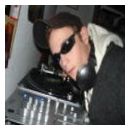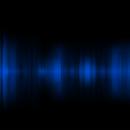Ultimamente he estado leyendo un libro o libro electronico cuyo titulo es
DJing For Dummies de
John Steventon y que a diferencia del libro tan conocido "el Manual del DJ", tiene mucho mas contenido (en Inglés) acerca de todo lo que este relacionado con la persona del DJ.
Aunque el tener un amigo que te enseñe y practicar y descubrir los errores por ti mismo es un medio de enseñanza válido y lo mas común hace unos años.
Si tienes a disposición a un amigo DJ que te enseñe y te ayude a corregir los errores, no hace falta leer ningún libro, eso es sabido de sobra. Pero si empiezas en esto y no tienes a nadie en quien apoyarte para que te inicie con buen pie entonces si te puede servir. No sólo este libro te puede servir, ahora foros como éste ocupan el papel del amigo maestro.
Aqui os dejo el "Índice de contenidos" del libro. No os voy a dar mas información ni webs, si no sería publicidad gratuita que nadie quiere. En google podeis informaros.
El libro consta de 409 páginas.
Table of Contents
Introduction.
About This BookConventions Used in This Book
Foolish Assumptions
How This Book Is Organised
Part I: Stocking Up Your DJ Toolbox
Part II: Navigating the Maze: Equipment Essentials
Part III: The Mix
Part IV: Getting Noticed and Playing Live
Part V: The Part of Tens
Icons Used in This Book
Where to Go from Here
Part I: Stocking Up Your DJ Toolbox
Chapter 1: Catching DJ Fever
Discovering the Foundations of DJing
Equipping yourself
Making friends with your wallet
Knowing your music
Researching and discovering
Connecting your equipment
Beatmatching Takes Patience and Practice
Working as a DJ
Chapter 2: Starting Off with the Bare Bones
Making a List, Checking It Twice
Choosing Your Input Devices
Thinking about turntables (for vinyl DJs)
Deciding on CD decks
Musing on MP3s and PCs
Mixing It Up with Mixers
Monitoring Your Music with Headphones
Powering Things Up with Amplifiers
Figuring Out the Furniture
Considering ergonomics and stability
Selecting store-bought stands
Building bricks and the new vibration killers
Locating Your DJ Setup
Chapter 3: Retro Chic or PC Geek? Buying Records, CDs,
and MP3s
Knowing Your Genre’s Format Availability
Reflecting on vinyl
Keeping up with CDs
Buying Records and CDs
Sizing up vinyl formats
Sussing out CD options
Researching your tunes
Listening to the music
Weighing up the pros and cons of classic anthems
and new music
Byting into MP3s
Surfing into Online Record Stores
Knowing where to go
Previewing tracks
Ordering and delivery
Using auction sites
Protecting Your Records and CDs
Storing records
Cleaning records, CDs, and the needle
Repairing vinyl
Fixing warped records and CDs
Repairing CDs
Chapter 4: Shopping for Equipment
Taking Stock Before You Shop
Trying before you buy
Budgeting your money
Buying Brand New
Cruising the high street
Opting for online shopping
Buying Second-hand
Scanning newspapers
Dipping into pawn shops
Bidding on auction Web sites
Making Sure That Your Kit Works
Checking cables
Testing turntables
Vetting CD decks
Monitoring mixers
Assessing headphones
Sounding out amplifiers and speakers
Part II: Navigating the Maze: Equipment Essentials
Chapter 5: Getting Decked Out with Turntables
Avoiding Cheap Turntables
Motoring in the right direction
Watching out for pitch control design
Identifying Key Turntable Features
Start/Stop
On/Off
33/45/78 RPM
Strobe light
Deckplatters
Target light
Pitch control
Counterweight/height adjust
Antiskate
Removable headshell/cartridge
45 RPM adaptor
Customising Your Sound with Advanced Turntable Features
Pitch range options
Pitch bend and joystick control
Tempo reset/Quartz lock
Master Tempo/Key Lock
Digital display of pitch
Adjustable brake for Start/Stop
Reverse play
Different shaped tonearms
Removable cabling
Digital outputs
Battle or club design
Built-in mixer
Servicing Your Turntables
Chapter 6: Perfecting Your Decks: Slipmats and Needles
Sliding with Slipmats
Choosing an appropriate slipmat
Winning the friction war
Getting Groovy with Needles and Cartridges
Choosing the Right Needle for Your DJ Style
Feeling the Force with Counterweight Settings
Nurturing Your Needles
Chapter 7: Keeping Up with the Techno-Revolution
Choosing Your Format: Analogue or Digital
My way is the best!
Looking at the pros and cons
Choosing a CD Deck That Fits Your Style
Looking Into the Future of Vinyl
Getting into MiniDisc, MP3s, and PCs
Remembering MiniDisc decks
Wising up to MP3s
Mixing with iPods
Mixing on PC
Futureproofing with Live and Traktor
Live
Traktor
Chapter 8: Stirring It Up with Mixers
Getting Familiar with Mixer Controls
Inputs
Outputs
Multiple channels
Cross-faders
Channel-faders
Headphone monitoring
EQs and kills
Input VU monitoring
Gain controls
Balance and pan controls
Hamster switch
Punch and transform controls
Effects Send and Return
Built-in effects
Built-in samplers
Built-in beat counters
Beat light indicators
Fader starts
Choosing the Right Mixer
The seamless mix DJ
The scratch DJ
The effects DJ
The party/wedding DJ
Servicing Your Mixer
xiv DJing For Dummies
Chapter 9: Ear-Splitting Advice about Not
Splitting Your Ears: Headphones
Choosing a Good Set of Headphones
Single-sided, coiled cords
Swivelling earpieces
User-replaceable parts
Stick it to your ears
Remembering that the Volume Doesn’t Have to Go Up to 11
Using Earplugs
Chapter 10: Letting Your Neighbours Know
That You’re a DJ: Amplifiers
Choosing Suitable Amplification
Settling on your home stereo
Purchasing powered speakers
Opting for an amplifier and separate speakers
A power margin for error
Working with Monitors
Positioning Your Monitor
Noise Pollution: Keeping an Ear on Volume Levels
Protecting your ears
Keeping the noise down for the people around you
Realising that you only need one speaker
Chapter 11: Plugging In, Turning On: Set-up and Connections
Getting Familiar with Connectors
RCA/Phono connections
XLRs
Quarter-inch jack
Setting Up and Connecting the Turntable
Deckplatter
Tonearm
Peripherals 164
Plugging In the Mixer
Connecting turntables to a mixer
Connecting CD decks to a mixer
Connecting iPods and MP3s to a mixer
Connecting a computer as an input device
Plugging in your headphones
Connecting effects units to a mixer
Connecting mixer outputs
Connecting a mixer to your home hi-fi
Connecting a mixer to powered speakers
Connecting a mixer to your PC/Mac
Connecting your computer to an amplifier
Troubleshooting Set-up and Connections
Part III: The Mix
Chapter 12: Grasping the Basics of Mixing
Knowing What Beatmatching’s All About
Understanding BPMs
Calculating BPMs
Discovering How to Beatmatch
Setting up your equipment
Locating the first bass beat
Starting your records in time
Adjusting for errors
Knowing which record to adjust
Using the Pitch Control
Matching the pitch setting
Playing too slow or too fast
Taking your eyes off the pitch control
Introducing Your Headphones
Switching over to headphone control
Cueing in your headphones
Centre your head with stereo image
Practising with your headphones
Chapter 13: Picking Up on the Beat: Song Structure
Why DJs Need Structure
Multiplying beats, bars, and phrases
Hearing the cymbal as a symbol
Everything changes
Counting on where you are
Studying Song Structure
Accepting that Every Tune’s Different
Developing Your Basic Instincts
Listening to a Sample Structure
Chapter 14: Mixing Like the Pros
Perfecting Placement
Intros over outros
Melodic outro
Melodic intro
Mixing Breakdowns
Controlling the Sound of the Mix
Bringing the cross-fader into play
Discovering the secret of channel-faders
Letting you in on a big, curvy secret
Balancing it out with EQs
Using Mixing Tricks and Gimmicks
Spinbacks and dead-stops
Power off
A cappella
Cutting in
Mixing Different Styles of Music
The wedding/party/rock/pop mix
The R & B mix
Drum and bass, and breakbeat
Chapter 15: Mixing with CDs
Navigating the CD
Buttons
Jog dials
Platters
Working with the Cue
Locating the cue
Storing the cue
Check the cue
Starting the tune
Adjusting the Pitch
Taking Advantage of Special Features
Chapter 16: Scratching Lyrical
Setting Up the Equipment the Right Way
Weighing up needles
Giving slipmats the slip
Touching up mixers
Making the mixer a hamster
Setting the right height
Preparing for the Big Push
Wearing out your records
Marking samples
Fixing the hole in the middle
Scratching on CD, MP3, and Computer
Scratching on PC
Marking CDs and MP3s
Mastering the Technique
Getting hands on
Starting from Scratch and Back Again
Scratching without the cross-fader
Introducing cross-fader fever
Combining scratches
Juggling the Beats
Offsetting
Practice, dedication, and patience
Part IV: Getting Noticed and Playing Live
Chapter 17: Building a Foolproof Set
Choosing Tunes to Mix Together
Beatmatching – the next generation
Mixing with care
Getting in tune with harmonic mixing
Keying tunes
Knowing how much to pitch
Developing a Style
Easing up on the energy
Changing the key
Increasing the tempo
Avoiding stagnation
Respecting the crowd
Getting your style on tape
Chapter 18: Making a Great Demo
Preparing to Record the Demo
Programming your set
Picking and arranging the tunes
Bridging the gaps
Practising your set
Setting up to record
Correcting recording levels
Looking After Sound Processing
Keeping an even volume
Setting your EQs
Performing the Demo
Stay focused
Become a perfectionist
Listen with an open mind
Making a Demo CD on Computer
Editing your mix
Burning a CD
Sending Off the Mix
Chapter 19: Getting Busy With It: Working as a DJ
Marketing Yourself
Flood the world with your demo
Play for free
Offer owners what they want to hear
Joining an Agency
Research an agency
Meet the criteria to join
Cut your losses
Networking Your Way to Success
Sell yourself
Make friends
Go ‘undercover’
Marketing Yourself on the Internet
Chapter 20: Facing the Music: Playing to a Live Crowd
Investigating the Venue
Scoping the club
Getting ready to party
Preparing to Perform
Selecting the set
Organising your box
Knowing What to Expect at the Club
Dealing with nerves
Getting used to your tools
Working in a loud environment
Playing Your Music
Reading a crowd
Handling requests
Taking over from someone else
Finishing the night
Part V: The Part of Tens
Chapter 21: Ten Resources for Expanding Your Skills
and Fan Base
Staying Current with Media
Visiting DJ Advice Web Sites
Getting Answers through DJ Forums
Reading Other Books
Getting Hands-On Advice
Listening to Other People’s Mixes
Participating in Competitions
Hosting Your Own Night
Uploading Podcasts or Hosted Mixes
Immerse Yourself in What You Love
Chapter 22: Ten Answers to DJ Questions
You’re Too Afraid to Ask
Do I Need to Talk?
What Should I Wear?
How Do I Go to the Toilet?
Can I Invite My Friends into the DJ Booth?
How Do I Remove the Beat, or Vocals?
How Do I Choose My DJ Name?
Do I Get Free Drinks? (And How Do I Get Drinks from the Bar?)
Who Does the Lighting for the Night?
Should I Re-set the Pitch to Zero After Beatmatching?
What Do I Do if the Record or CD Skips or Jumps?
Chapter 23: Ten DJing Mistakes to Avoid
Forgetting Slipmats/Headphones
Taking the Needle off the Wrong Record
Banishing Mixer Setting Problems
Getting Drunk when Playing
Leaving Records Propped Up
Leaning Over the Decks
Avoiding Wardrobe Malfunction
Spending Too Long Talking to Someone
Leaving Your Last Tune Behind
Not Getting Paid Before You Leave
Chapter 24: Ten Items to Take with You When DJing
All the Right Records or CDs
Make it Personal with Headphones and Slipmats
You’re a Star! MiniDisc Recorder (or a Blank Tape)
Pack Your Tools and Save the Day
Always Be Prepared: Pen and Paper
Keep Fuelled with Food and Drink
Spread the Music with Demo Tapes and CDs
Keep Moving with Car Keys
Have Wallet, Will Travel
Just Chill: Chill Tape for the Ride Home
Chapter 25: Ten Great Influences on Me
Renaissance – Disc 1
Tonsillitis
Ibiza 1996 Radio 1 Weekend
The Tunnel Club, Glasgow
Jamiroquai – ‘Space Cowboy’
Jeremy Healy
Alice Deejay – ‘Better Off Alone’
Delirium ‘Silence’
Sasha and Digweed Miami 2002










